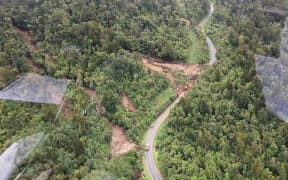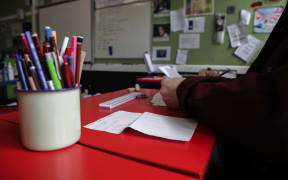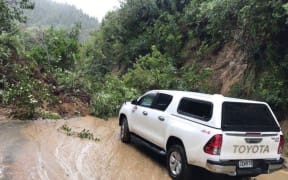Government books are now expected to go into the red this financial year with a forecast deficit of $900 million, down from a Budget forecast surplus of $1.3 billion.
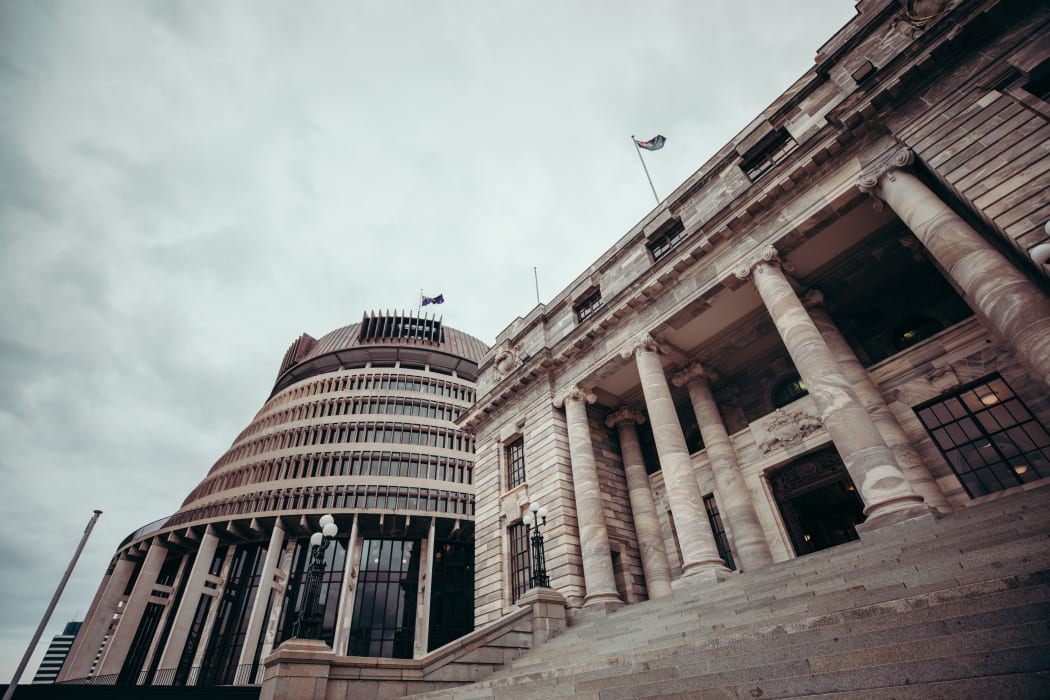
Photo: RNZ / Dom Thomas
The government will borrow $12 billion to spend on transport, schools, hospitals and investment in the regions over the next five years, as part of its new Infrastructure Fund.
The price tag for the fund was revealed in the Half Year Economic and Fiscal Update, with details of specific projects announced next year.
A lower tax take, higher than expected government costs and the impact of global economic "headwinds" are all to blame for the forecast deficit.
At the May Budget, growth was predicted to be 3 percent this financial year, but that's been revised down to 2.5 percent. It also forecast a $1.3 billion surplus, which has been downgraded to a $900 million deficit.
However, the economy is expected to pick up from late next year, partly driven by higher government spending and the effect of persistently low interest rates, delivering surpluses from the next financial year onwards.
In a bid to stimulate growth, the government will borrow an extra $12 billion to spend on capital infrastructure like schools, transport networks and hospitals over the next five years, dependent on whether there's enough capacity to actually get the projects underway.
Specific projects will receive $8 billion in funding and the rest will be added to the yearly spending allowance.
This will boost government debt as a percentage of GDP higher than previous forecasts in the coming years, but by 2024 is still predicted to be well within the government's self-imposed debt limits of 19.6 percent.
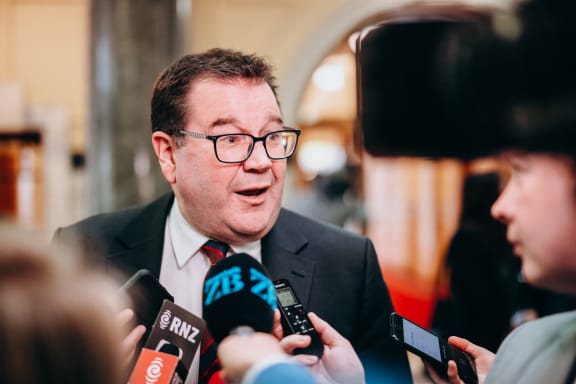
Grant Robertson Photo: RNZ /Dom Thomas
"With debt low and borrowing costs at record lows, the conditions are right for the government to invest to future-proof New Zealand," Finance Minister Grant Robertson said.
It would be "ludicrously stubborn" not to borrow money to fix problems with government assets, or meet other demands, he said, even if that meant bumping up against the government's own debt limits, before the new band came into effect.
The forecast deficit is due to the government collecting less in tax - to the tune of about $500 million - having to budget more for ACC claims because of the impact of low interest rates on its forecast investment returns, and higher social services costs.
But the labour market remains "tight", with unemployment predicted to stay steady at around 4.2 percent and wage growth to reach 3.7 percent by 2024.
Treasury said New Zealand remained vulnerable to international conditions with global growth slowing and the outlook easing.
"Escalating trade protectionism, and the associated uncertainty, has weakened global trade and dampened investment spending."
But it said demand for New Zealand's major export commodities had "remained firm".
Infrastructure Fund
Mr Robertson had already announced $400 million for school upgrades around the country, and has today flagged the areas of priority for capital spending: road and rail, regional investment opportunities, DHB "asset renewal", and "public estate decarbonisation" - moving schools, hospitals and prisons towards more environmentally friendly ways of heating was one example given.
With $6.8 billion tagged for new transport projects, road and rail were the "dominant force", he said.
The government already had several projects in mind, some of which were "shovel ready", but Mr Robertson said the government wanted to make sure all the "i's are dotted and the t's crossed" before announcing any of them publicly - that will happen at the start of election year.
Anyone who viewed this as an election year slush fund was "deeply cynical", he said.
'This is a 'tax, spend, borrow, hope' government' - Simon Bridges
National said this is an indictment on the government's economic management and has accused it of "screwing up" the economy.
Leader Simon Bridges said the government inherited surpluses and a fast growing economy and has blown it in "two short years".
"Treasury was forecasting surpluses to 2032, and what's changed? Well it's the government that has changed, and two years in they're in the red - that's shameful.
"This is a 'tax, spend, borrow, hope' government. We've said it from the start and we've been proven right quicker than we thought," he said.
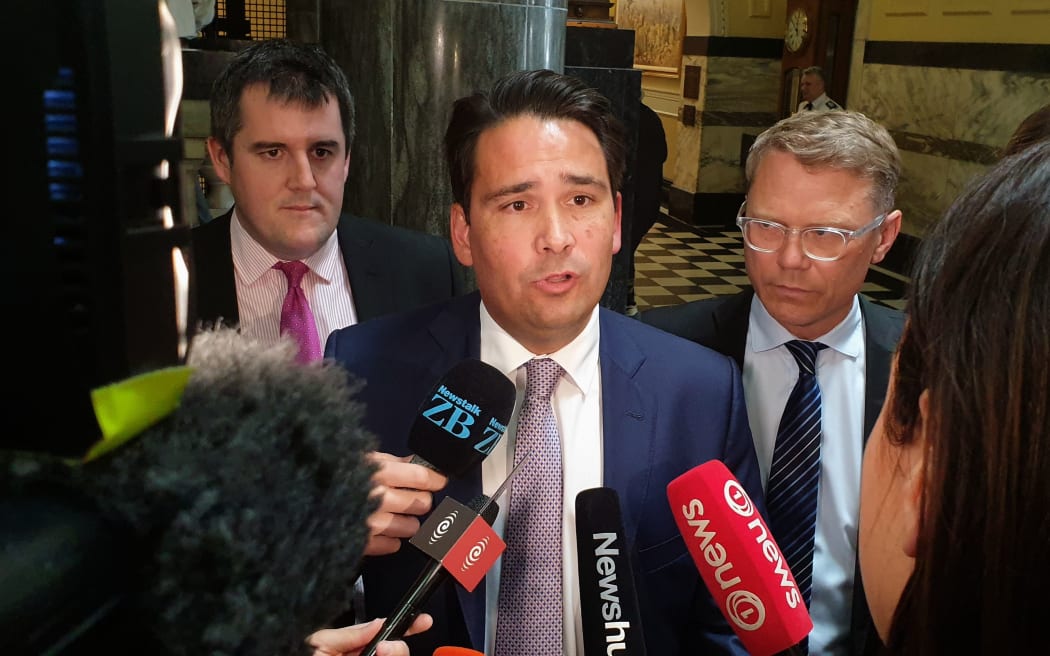
National leader Simon Bridges, flanked by National's Transport spokesperson Chris Bishop (L) and Finance and Infrastructure spokesperson Paul Goldsmith (R). Photo: RNZ / Craig McCulloch
Bridges said the government's infrastructure package is an election year slush fund and he seriously doubted any significant projects would be underway before the end of the term.
"The reality is the only way they could do that is to go back to projects they canned under National," he said.
National's Finance Spokesperson Paul Goldsmith also expressed doubt that this deficit would be a one-off.
"You can rest assured once they've got the taste for deficits they'll keep them going year after year."
Goldsmith also called out the government, saying it had broken its promise to reduce debt below 20 percent of GDP by 2022.
"They only made that promise in 2017 before the election because nobody trusts Labour around spending and they have shown that that lack of trust is richly deserved," Goldsmith said.

